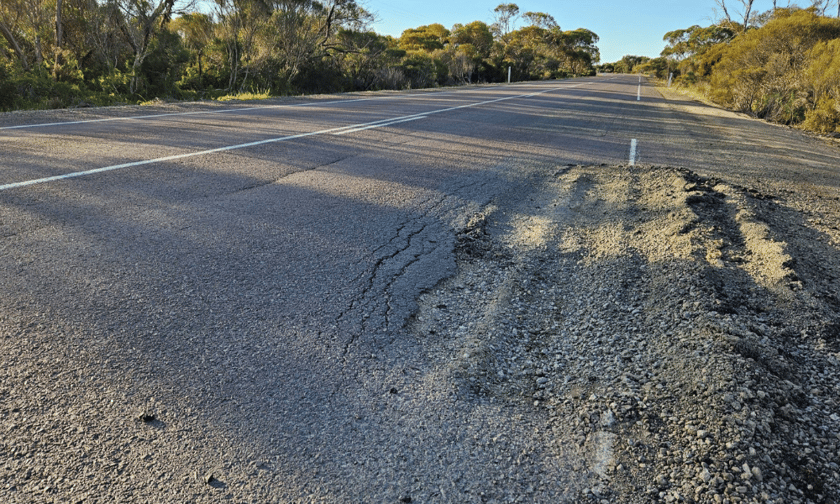

The Royal Automobile Association of South Australia (RAA) is advocating for a detailed examination of the Eyre Peninsula’s road and transport infrastructure.
The organisation’s latest regional road assessment suggested that increased heavy vehicle traffic is placing undue strain on local council resources, necessitating a more robust approach to maintenance and upgrades.
The RAA report identified critical routes, including Cowell-Kimba Road, Balumbah-Kinnard Road, and Bratten Way, as particularly affected by the surge in heavy vehicles. This increase is linked to the 2019 cessation of rail services and the subsequent opening of a new port in the area.
As a result, these corridors are experiencing greater wear and tear, stretching the capacity of local councils to maintain them and other roads in their jurisdictions.
The assessment also highlighted safety concerns on several major roads, such as Lincoln Highway, Tod Highway, and Iron Knob Road. These issues include narrow shoulders, roadside hazards, and fatigue-related pavement cracking, which compromise road safety.
A survey included in the report collected feedback from over 1,300 residents of the Eyre Peninsula. A significant 76% of respondents cited road maintenance as a top concern, indicating widespread dissatisfaction with the current state of the roads.
To address the issues mentioned above, the RAA recommended several key measures:
RAA senior traffic engineer Matt Vertudaches emphasised the necessity of a strategic overhaul.
“It’s been five years since the Eyre Peninsula’s rail network was closed, so there is enough evidence now to look at the impact that has had on the road network,” he said. “In that time, we’ve seen increasing grain export from the new Lucky Bay port, and a shift in how and importantly, where grain moves around the region.”
He pointed out that while some key roads are generally the responsibility of the state government, many have fallen under the jurisdiction of local councils. The closure of rail lines, coupled with the port’s operation, has significantly increased the volume of heavy vehicles on these roads, raising maintenance needs.
The RAA suggested that a comprehensive review could identify more efficient management solutions.
“RAA believes a holistic review is needed to consider if this could be managed more effectively,” Vertudaches said. “We know road maintenance is a statewide issue – which is why we’ve been calling for the state government to commit $250 million per year to get on top of the current $2bn backlog.”
The RAA – which recently deemed school pick-up times the riskiest for pedestrian crashes – acknowledged recent improvements in South Australian roads, such as new overtaking lanes and intersection upgrades. It stressed the importance of aligning road upgrades with state road safety strategies, aiming for a minimum AusRAP safety rating of three stars for significant corridors.
From 2018 to 2022, the Eyre Peninsula recorded 395 casualty crashes, including 31 fatalities and 104 serious injuries. During the RAA’s review last year, infrastructure experts covered over 4,500 kilometres in the region and consulted with nine of the 11 local councils to assess the current state and challenges of the road network.
